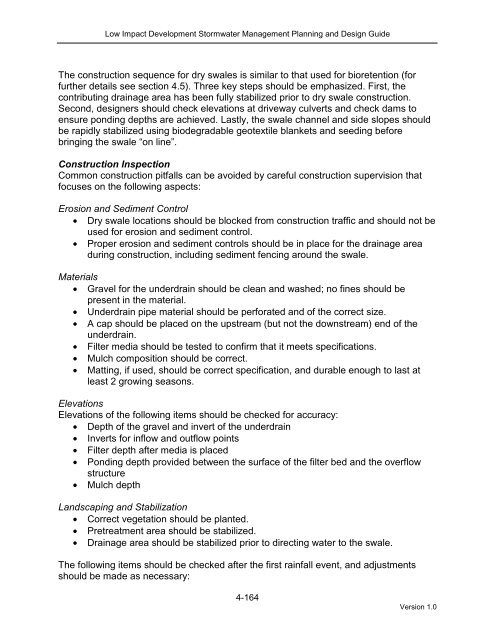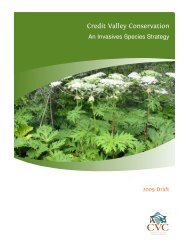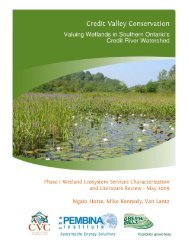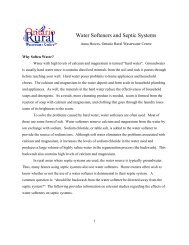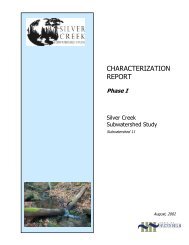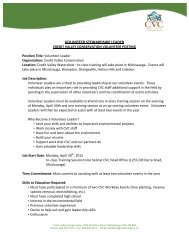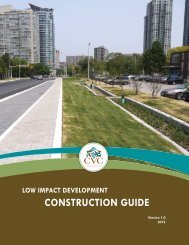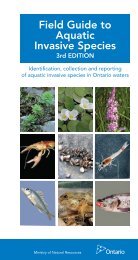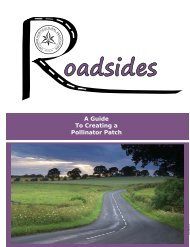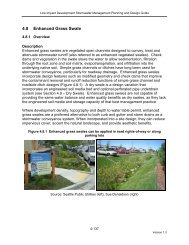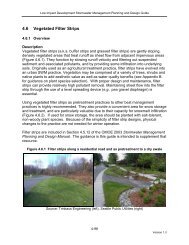Section 4.9 - Dry Swales - Sustainable Technologies Evaluation ...
Section 4.9 - Dry Swales - Sustainable Technologies Evaluation ...
Section 4.9 - Dry Swales - Sustainable Technologies Evaluation ...
Create successful ePaper yourself
Turn your PDF publications into a flip-book with our unique Google optimized e-Paper software.
Low Impact Development Stormwater Management Planning and Design Guide<br />
The construction sequence for dry swales is similar to that used for bioretention (for<br />
further details see section 4.5). Three key steps should be emphasized. First, the<br />
contributing drainage area has been fully stabilized prior to dry swale construction.<br />
Second, designers should check elevations at driveway culverts and check dams to<br />
ensure ponding depths are achieved. Lastly, the swale channel and side slopes should<br />
be rapidly stabilized using biodegradable geotextile blankets and seeding before<br />
bringing the swale “on line”.<br />
Construction Inspection<br />
Common construction pitfalls can be avoided by careful construction supervision that<br />
focuses on the following aspects:<br />
Erosion and Sediment Control<br />
• <strong>Dry</strong> swale locations should be blocked from construction traffic and should not be<br />
used for erosion and sediment control.<br />
• Proper erosion and sediment controls should be in place for the drainage area<br />
during construction, including sediment fencing around the swale.<br />
Materials<br />
• Gravel for the underdrain should be clean and washed; no fines should be<br />
present in the material.<br />
• Underdrain pipe material should be perforated and of the correct size.<br />
• A cap should be placed on the upstream (but not the downstream) end of the<br />
underdrain.<br />
• Filter media should be tested to confirm that it meets specifications.<br />
• Mulch composition should be correct.<br />
• Matting, if used, should be correct specification, and durable enough to last at<br />
least 2 growing seasons.<br />
Elevations<br />
Elevations of the following items should be checked for accuracy:<br />
• Depth of the gravel and invert of the underdrain<br />
• Inverts for inflow and outflow points<br />
• Filter depth after media is placed<br />
• Ponding depth provided between the surface of the filter bed and the overflow<br />
structure<br />
• Mulch depth<br />
Landscaping and Stabilization<br />
• Correct vegetation should be planted.<br />
• Pretreatment area should be stabilized.<br />
• Drainage area should be stabilized prior to directing water to the swale.<br />
The following items should be checked after the first rainfall event, and adjustments<br />
should be made as necessary:<br />
4-164<br />
Version 1.0


